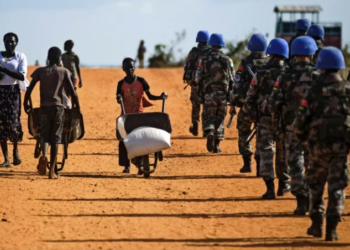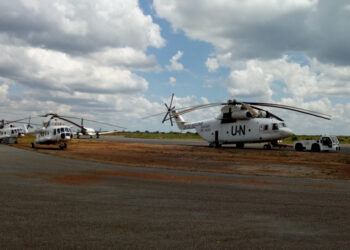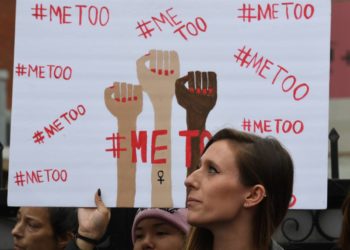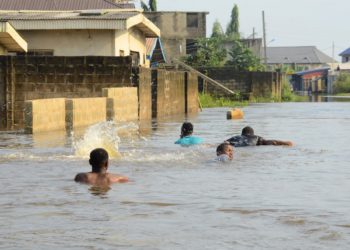Eight-year-old girls, pregnant women, and nursing mothers – all of them have become victims of chronic, endemic sexual violence in South Sudan, with attacks being especially prolific in the country’s northern Unity region, according to the latest report by the U.N. Human Rights Office and the U.N. Mission in South Sudan.
Crimes have been committed in a context of “pervasive impunity, which contributed to the normalization of violence against women and girls,” the U.N. said on Friday.
Between September and December 2018, at least 134 women and girls, some as young as eight, were raped in the area, and 41 have suffered other forms of sexual and physical violence. However, the actual number of cases is likely to be much higher, according to the report.
Origins of Conflict
South Sudan gained independence from Sudan in 2011, becoming the 193rd member of the U.N. But a civil war broke out in 2013 after President Salva Kiir accused his former deputy, Riek Machar, of plotting a coup. Since then, nearly 400,000 people have been killed and millions forced from their homes or driven to the brink of starvation.
In September, Kiir signed a peace agreement with rebel factions, and attacks against civilians have decreased significantly since then, according to the U.N., but the situation has remained volatile.
“The volatility of the situation in South Sudan combined with the lack of accountability for violations and abuses committed throughout Unity, likely leads armed actors to believe that they can get away with rape and other horrific forms of sexual violence,” U.N. High Commissioner for Human Rights Michelle Bachelet said. “Sadly, we have continued to receive reports of rape and gang rape in northern Unity since the beginning of this year.”
“There’s been very little accountability in #SouthSudan for what is a chronic, endemic problem of sexual violence against women & girls. Virtually complete impunity over the years" – @UNHumanRights deplores the prevalence of sexual violence in South Sudan. pic.twitter.com/UKmhLR97J8
— United Nations Geneva (@UNGeneva) February 15, 2019
Upsurge in Attacks
According to the U.N. report, multiple factors had contributed to the upsurge in sexual violence: a large number of fighters has been on “standby” mode awaiting implementation of the peace deal. At the same time, the presence of many armed youth militias and a lack of accountability for past sexual violence have exacerbated the situation.
The U.N. says members of the Sudan People’s Liberation Army in Opposition, as well as South Sudan People’s Defence Forces, have reportedly carried out most of the attacks.
“Almost 90 percent of the women and girls were raped by more than one perpetrator and often over several hours. Pregnant women and nursing mothers were also victims of sexual violence,” the report said, noting that survivors were often brutally beaten if they attempted to resist their assailants.
A 30-year-old woman from Koch County said in the report that women do not have a choice.
“There is no alternative for us. If we go by the main road, we are raped. If we go by the bush, we are raped. I was raped among others in the same area repeatedly on three different occasions,” she said.
“We avoided the road because we heard horrible stories that women and girls are grabbed while passing through and are raped, but the same happened to us. There is no escape – we are all raped.”
Sexual violence in South Sudan is surging in the Unity region says joint @UNHumanRights and UN Mission @unmissmedia report. Victims are as young as 8. https://t.co/2spJPtlewD
— UN News (@UN_News_Centre) February 15, 2019
Yei State Displacement
Attacks against women have also been reported in the Yei River State that borders the Democratic Republic of the Congo.
In the past two weeks, some 5,000 people have fled parts of the Yei region for the DRC since conflict intensified in the area between rebel group National Salvation Front and the South Sudan People’s Defense Forces. According to the U.N. Refugee Agency UNHCR, people left the conflict zone for DRC’s Ituri Province, and up to 9,000 have sought refuge on the outskirts of Yei town.
“Now we can confirm that there are almost 9,000 internally displaced South Sudanese who came from those affected areas at the border with DRC and Uganda and have come to the outskirts of Yei town, and the number has been increasing, and we are expecting more IDPs [internally displaced people] and refugees will arrive in both outskirt of Yei town and DRC,” Eujin Byun, the UNHCR Spokesperson in South Sudan, told The Globe Post.
Around 12,000 people have been forced to flee their homes in recent days because of violence in Yei, Central Equatoria https://t.co/41Mrw7jnz5 pic.twitter.com/ioFBbVjujv
— Charlie Yaxley (@yaxle) February 12, 2019
The UNHCR has increased its staff at the DRC border with South Sudan to quickly screen and relocate the refugees. Byun said the agency was considering moving them to a safer area in the DRC and called for more support from the international community.
“The refugees who crossed the border to DRC reported armed men raping, and murdering, and killing civilians, and that is why UNHCR calls on both parties to guarantee their safety route to leave those affected areas and ensure access of humanitarian agencies to those affected areas,” she added.
The UNHCR has started addressing some basic needs of the IDPs providing them with items like the sleeping mats, mattress, mosquito nets, and kitchen sets, Byun said, but the agency has been denied access to reach those who are trapped and could not get out of the most affected areas.
“All humanitarian agencies at the moment are gathering together to advocate for access to those in affected areas and to help those internally displaced who are stranded outside the outskirts of Yei,” she added.





















